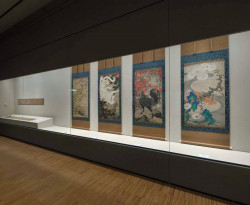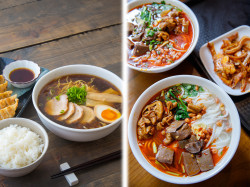
Originally published on metropolis.co.jp on March 2010

Part of being Korean is knowing your sense of duty. Hwang Su-Il is no exception, as you can gauge from the second part of his answer to a question I posed during a recent interview for Metropolis:
“It’s my obligation. Honestly, I don’t want to do it, but I have to do it.”
The first part of his response helps put this into context: “I’m a Korean in Japan, so I’m going to get into fights. In Japan, Koreans aren’t always treated well; people look down on them and tell you to get lost. If you don’t fight, you lose every time.”
It’s worth emphasizing that Hwang is actually a thoroughly likeable chap: a handsome 39-year-old with three young kids, who can speak English, Japanese and Korean and is generally an unassuming bloke. Until, that is, you get him to fight.
I f you watch him on YouTube, you’ll understand why the Bruce Lee fan managed to become taekwondo’s lightweight world champion in 1992. Even up against his peers in formal competition, Hwang was clearly a winner, absolutely focused on destroying anyone that stands in his way. Now retired, he teaches and coaches the new generation of taekwondo stars in Japan, many of whom will be competing at the All-Japan Championships at Yoyogi Gymnasium in March.
Held under the auspices of the International Taekwon-Do Federation Japan, the competition includes five weight classes for women and six for men, as well as a junior division. Top fighters include Seo Byong Su, three-time champion at the under-71kg weight; Kenji Funamizu, five-time champ at the under-57kg level; and Akira Tanaka, who has won the last six titles in the under-64kg category—and is also one of Hwang’s students.
Like karate, taekwondo is a relatively young sport that is governed by two world bodies: the International Taekwon-Do Federation and the World Taekwondo Federation. The former was founded by Choi Hong Hi, a military general who ended up living in exile in Canada after falling out with dictator Park Chung Hee in 1972. In his absence, the World Taekwondo Federation was established in South Korea, and is now recognized by the International Olympic Committee. The two organizations have been taking steps to come together in recent years, but it’s a slow process.
In taekwondo competitions, points are scored for landing blows (not fullcontact) over two two-minute periods, and the fighter with the most points wins. In ITF tournaments, competitors wear protectors on their hands and feet; WTF fighters wear body and head guards.
“ Taekwondo focuses mainly on kicking ,” says Hwang . “ There are a lot of kicking techniques, including speed, the angle of kicks, spinning and jumping. We do use our fists, but mostly it’s about kicking.
“ You have to be able to move sharply, have a flexible body to jump high… and you need an explosive attack,” he continues. “But to win, you also have to be very smart tactically.” Hwang emphasizes that the seemingly violent sport is still about discipline and control.
“The techniques were created as weapons; if you didn’t do that, it would just be like dancing,” he says. “But you have to teach students how to use it properly, to be disciplined and to keep their minds under control.” Taekwondo has formal patterns known as tul, and Hwang emphasizes that the sport is an excellent way of doing regular exercise and developing fitness.
And beating people up, of course–but only when you really have to.
All-Japan Championships
Mar 21, 3pm; Mar 22, 9am. ¥1,500-¥2,000. Yoyogi Gymnasium. Tel: 042-360-1289.







